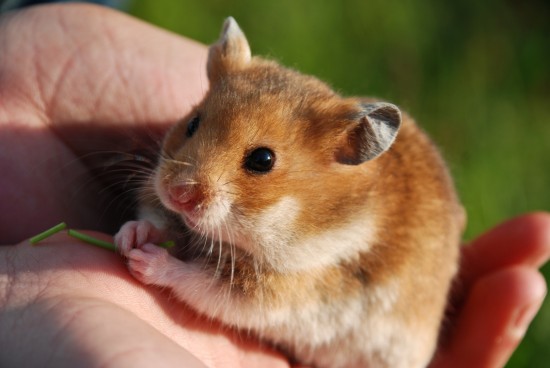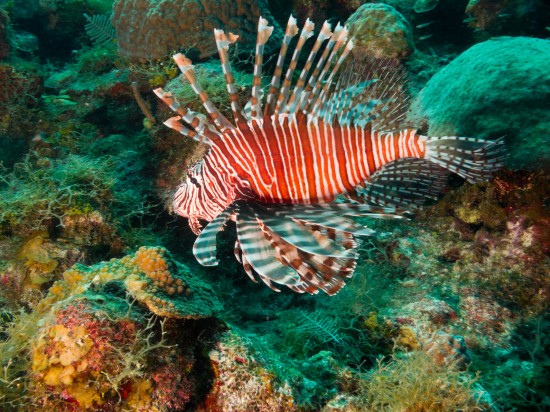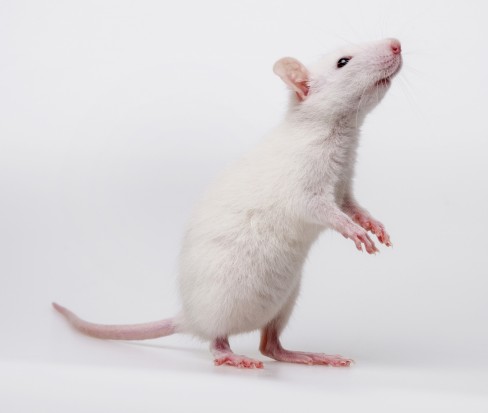

Hamsters are very resilient little creatures, they make fantastic first time pets for children to look after because in general, these little rodents are easy to keep. They're lively and can be a constant source of amusement. However, there are certain illnesses and diseases you need to watch out for, one of which is called wet tail and thankfully it's a condition that is quite rare.
Wet tail is a very serious condition which if left untreated can prove fatal to little hamsters. A common mistake many owners make, is to think that diarrhoea is in fact “wet tail”, when in truth the actual disease ins found in the lower part of the ileum (intestine) and the condition causes this to become inflamed, swollen and extremely painful. Often the condition is referred to as “proliferative ileitis” or “transmissible ileal hyperplasia”.
A hamster suffering from the condition will suffer a very bad case of diarrhoea but there are other symptoms that will manifest themselves too, which is why calling “wet tail” a form of diarrhoea is misleading because the prognosis for the conditions are so different. Diarrhoea can be treated whereas if left for any length of time wet tail is fatal to hamsters.
A hamster suffering from wet tail will pass the condition on to any other hamsters they come into contact with. It takes around seven days for the symptoms to show themselves, with one week being the accepted incubation period for wet tail. Sadly, a hamster that recovers from the condition can be re-infected because having suffered once does not mean the little creature builds up any sort of immunity against catching wet tail again.
If you even suspect that your hamster may have the beginnings of the condition, you need to get them to the vet straight away and then you would need to disinfect everything your pet has come into contact with and this includes the things they have in their cages and the cages themselves. You need to use an appropriate cleaner that's safe to use around small animals.
It is often better to discard or throw away any feeding equipment like bowls or water containers if your hamster has wet tail. The other alternative is to clean them thoroughly with a disinfectant and it has to be one that is small animal friendly. Then leave the dishes and bowls in a cupboard so that if any bacteria is still present has the chance to completely die off before using them again – but if budget permits, it is better to buy new to be on the safe side.
You should wash your hands thoroughly after cleaning out your hamster's cage and any of their equipment. If you have two or more hamsters, you need to separate them immediately if one of them shows any signs of having the condition so the other pet hamster does not catch wet tail too.
In the main it's younger hamsters that suffer from wet tail as it often occurs just after the little one's have been weaned from their mums. There is a certain amount of stress involved from being taken away from mum and the rest of the litter and it is thought this may have something to do with hamsters suffering from wet tail.
The first sign you'll normally notice is when a pet hamster starts to look a little unkempt, their coats look a mess and they appear lethargic. Hamsters with the condition usually lose their appetites and will suffer from very foul smelling diarrhoea which might also contain a little blood in it.
Wet tail is a very painful condition that causes a lot of stress to hamsters. You may notice your pet adopts a hunched over position as this normally helps relieve the pain they are feeling a little. When the pain is too much, hamsters will cry out because not only is their tail very sore, but their intestines are painful too.
The symptoms can come on really quickly and as soon as you see there is a problem, you need to isolate the hamster immediately and get them to see a vet as a matter of urgency. Your hamster will need to be given the right kind of veterinary medication and this has to be administered quickly in order to get on top of the problem.
Wet tail, fortunately is not a common disease – but you need to keep your eye out for any symptoms so you can get the hamster to the vet as soon as you can. If you have recently introduced a new hamster to an existing environment, then you should keep them separate from existing pets just in case and you should do this for a week or ideally two before you introduce the new hamster to your existing ones.
Never buy a hamster from a pet shop that has experienced an outbreak of wet tail because it is really hard to completely eradicate and you don't want to bring a poorly hamster home with you even if they look in great condition when you buy them. The incubation period of wet tail, as mentioned before is around 7 days so the little animal may be infected but not showing any of the symptoms. Two types of hamster that rarely suffer from wet tail are the Chinese and Russian hamster.
The condition can be treated but this needs to done by a qualified vet. There is a lot of much needed after care involved s well so that a poorly hamster can pull through. However, there are many secondary complications which includes severe dehydration. This occurs due to the severe diarrhoea that if part of the condition.
The other problem is that many hamsters suffer rectal prolapse where the intestine comes through the anus if owners don't get them to the vet in time. This is why it is so important to get a hamster with suspected wet tail to the vet as soon as you suspect there may be a problem – it is always better to be safe than sorry and have a vet confirm whether your pet has indeed got wet tail.
Vets normally like to give hamsters an antibiotic which could be neomycin. The medication needs to be administered orally three times each day. However, hydration is the other crucial thing that has to be done because of the chronic diarrhoea. Vitamins added to the sick hamster's water will help in the recovery process too and many vets advise doing this to aid quick recovery. If you have other hamsters in the home, it is a good idea to add some antibiotic to their drinking water which vets will be only too happy to prescribe for you.
Thankfully the condition is quite rare so there are not that many preventative measures to take. However, purchasing or adopting a pet hamster from a reputable breeder or animal rescue shelter, will give you the peace of mind that your pet is healthy and not suffering from wet tail.
Keeping your pet hamster's environment as clean as possible goes a long and will ensure overall good health and well being. If you are unlucky enough to get a hamster with the condition, then you have to keep them away from any other hamsters you may have and be very strict about what food bowls and other equipment you use for your poorly pet – never using them on the hamsters that are in good health because wet tail is extremely contagious.
 Organic Pet Food - Great Or Gimmick?
Organic Pet Food
Organic Pet Food - Great Or Gimmick?
Organic Pet Food
 Keeping Lionfish In A Tropical Aquarium
Keeping Lionfish
Keeping Lionfish In A Tropical Aquarium
Keeping Lionfish
 10 Reasons Why You Should Own A Pet Rat
10 Reasons Why Yo
10 Reasons Why You Should Own A Pet Rat
10 Reasons Why Yo
 Finnish Spitz Hereditary Health And Longevity
Finnish Spitz Her
Finnish Spitz Hereditary Health And Longevity
Finnish Spitz Her
 Siberian Husky Colours, And Commonly Confused Breeds
Siberian Husky Co
Siberian Husky Colours, And Commonly Confused Breeds
Siberian Husky Co
Copyright © 2005-2016 Pet Information All Rights Reserved
Contact us: www162date@outlook.com